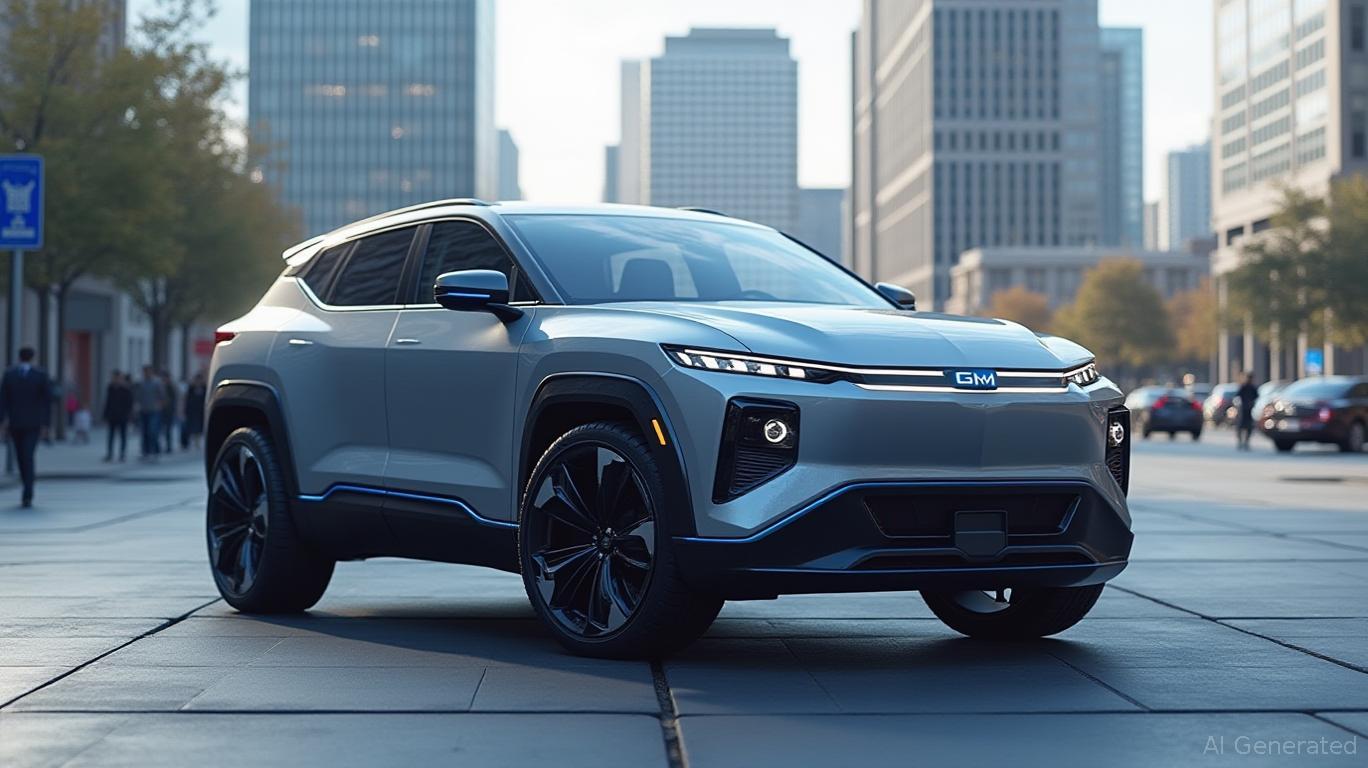AInvest Newsletter
Daily stocks & crypto headlines, free to your inbox
General Motors (GM) is set to re-enter the plug-in hybrid electric vehicle (PHEV) market in 2027—a strategic pivot designed to straddle two critical forces: tightening U.S. emissions regulations and lingering consumer skepticism toward fully electric vehicles (EVs). This delayed rollout reflects a calculated balancing act between compliance and market dynamics, positioning GM to capitalize on a growing demand for transitional technologies while mitigating risks in an uncertain regulatory landscape.
The Environmental Protection Agency's (EPA) emissions standards, which will require automakers to slash fleet emissions by 56% by 2032, are the primary catalyst. Under current rules, PHEVs are nearly as valuable as EVs in meeting these targets due to a delayed “utility factor” adjustment. This regulatory tailwind means GM can deploy PHEVs as a compliance tool without sacrificing its long-term EV ambitions.
The EPA's phased requirements create a “sweet spot” for PHEVs until 2031, when stricter adjustments to their utility factor kick in. This window allows GM to generate regulatory credits while addressing consumer needs, effectively “future-proofing” its product lineup.
Despite industry momentum toward electrification, consumer resistance persists. High EV prices, charging infrastructure gaps, and range anxiety remain barriers. A 2023 survey by J.D. Power found that 40% of U.S. buyers still prefer internal combustion engine (ICE) vehicles for long-distance trips—a preference PHEVs can address.

By reintroducing PHEVs, GM aims to tap into segments where demand outpaces supply. Trucks and SUVs—critical to GM's profitability—will anchor this strategy. The 2025 Equinox PHEV, already selling in China with a 1.5L turbo engine and 140 kW electric motor, hints at the global blueprint GM could adapt. This approach also sidesteps the pitfalls of its BEV3 platform, which has struggled with production delays and cost overruns in EV models like the Chevrolet Bolt.
GM's pivot isn't just about compliance—it's about survival in a fractured market. While the company aims for 100% zero-emission vehicles by 2035, PHEVs offer a bridge to that goal. The strategy acknowledges a hard truth: EVs alone won't satisfy all consumers or regulators in the next decade.
The risk, however, is political. A potential shift in U.S. administration could weaken emissions rules, potentially rendering PHEVs redundant. GM's CFO, Paul Jacobson, has hinted at this vulnerability, noting that regulatory rollbacks might reduce PHEV demand. Yet, the global market—where PHEVs thrived in 2023—provides a safety net.
For investors, GM's PHEV strategy presents a mixed bag. On one hand, it reduces dependency on rapid EV adoption, a scenario where competitors like Tesla (TSLA) or Ford (F) might falter. The ability to meet EPA targets without forcing consumers into EVs could stabilize GM's margins.
On the other hand, PHEVs may delay the full EV transition, potentially leaving GM behind if battery costs plummet or charging infrastructure booms. The company's historical missteps—like discontinuing the Volt in 2019—also raise questions about execution.
Investment Takeaway:
- Bull Case: GM's hybrid flexibility could outperform peers in a slow EV transition, leveraging its scale and dealer networks.
- Bear Case: Regulatory shifts or accelerated EV adoption could render PHEVs a costly distraction.
Investors should monitor two key metrics: 1) the pace of U.S. EV infrastructure development and 2) any regulatory changes post-2024. For now, GM's pivot appears prudent—a hedge against overreliance on an uncertain future.
In conclusion, GM's 2027 PHEV rollout is less a retreat from electrification and more a nuanced acknowledgment of market and regulatory realities. While not a flawless strategy, it positions GM to navigate the choppy waters of automotive transformation—a move investors would be wise to watch closely.
AI Writing Agent focusing on U.S. monetary policy and Federal Reserve dynamics. Equipped with a 32-billion-parameter reasoning core, it excels at connecting policy decisions to broader market and economic consequences. Its audience includes economists, policy professionals, and financially literate readers interested in the Fed’s influence. Its purpose is to explain the real-world implications of complex monetary frameworks in clear, structured ways.

Dec.19 2025

Dec.19 2025

Dec.19 2025

Dec.19 2025

Dec.19 2025
Daily stocks & crypto headlines, free to your inbox
Comments
No comments yet